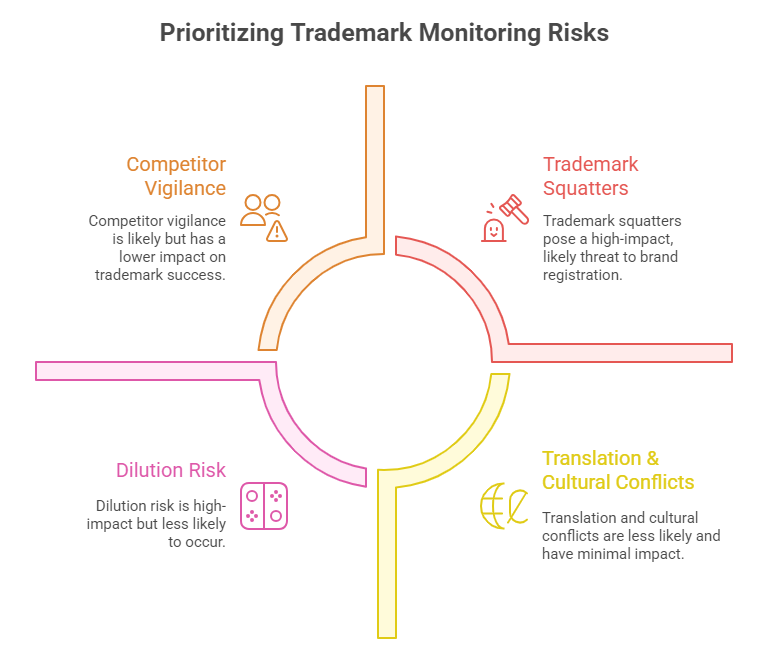Securing trademark registration in China is a critical step for market entry and brand protection. However, the journey doesn’t end when you file your application. A crucial, often underestimated, phase follows: the 3-month opposition period after your mark is published in China’s Trademark Gazette. Proactive monitoring during this window is not just advisable; it’s essential for safeguarding your brand. Failure to monitor effectively can lead to costly disputes, delayed market entry, or even the complete loss of your trademark rights in this vital market.

Understanding the Trademark Gazette & Opposition Window
Upon preliminary approval by the China National Intellectual Property Administration (CNIPA), your trademark application is published in the Official Trademark Gazette of China. This publication triggers a legally mandated 3-month period during which any third party believing your mark infringes upon their prior rights can file an opposition to block its registration.
- The Gazette’s Role: It serves as the official public record where all preliminarily approved trademarks are displayed, including the mark itself, the applicant’s name/address, the application number, date, designated goods/services classes, and the mark’s status.
- The 3-Month Countdown: From the publication date, potential opponents have exactly three months to formally file an opposition with CNIPA. Missing this deadline means they generally lose the right to oppose this specific application based on prior rights (though other actions like invalidation might be possible later).
Why Proactive Gazette Monitoring is Non-Negotiable
Relying on CNIPA notifications or hoping competitors won’t notice is a high-risk strategy. Here’s why dedicated monitoring is imperative:
- Trademark Squatters: China operates on a “first-to-file” system. Unscrupulous entities often monitor Gazettes for valuable foreign brands not yet registered in China, filing oppositions to block the legitimate owner. Their goal is often to extract a ransom or sell the mark back.
- Competitor Vigilance: Competitors actively monitor Gazettes for marks similar to theirs within their industry. They are highly motivated to oppose marks they perceive as a threat to their market share or brand distinctiveness.
- Similar/Identical Marks: Legitimate prior rights holders (trademark owners, copyright holders, trade name owners) may identify your mark as confusingly similar or identical to theirs within related classes. They have a legal basis and interest to oppose.
- Translation & Cultural Conflicts: Marks that sound similar to existing Chinese brands, have negative connotations in Chinese, or conflict with cultural symbols may attract oppositions from existing rights holders or even concerned parties.
- Dilution Risk: Owners of well-known trademarks may oppose marks they believe would dilute the distinctiveness or reputation of their famous mark, even in unrelated classes.
- Timely Response is Critical: If an opposition is filed against your mark, you typically have a strict deadline (e.g., 30 days from receipt of CNIPA notification, though the timeframe can be complex) to submit a formal defense with evidence. Missing your response deadline almost always results in the rejection of your application. Knowing about the opposition immediately via monitoring gives you maximum time to prepare a robust defense.
Effective Opposition Monitoring & Risk Mitigation Strategies
Implementing a structured monitoring strategy is key to navigating the opposition period successfully:
- Systematic Detection:
- Professional Monitoring Services: This is the most reliable and efficient method. Specialized providers (like professional trademark monitoring services) use sophisticated software and expertise to scan every Gazette issue for marks identical or similar to yours across relevant classes. They provide timely alerts, often within days of publication. This frees your internal team from a highly manual and complex task.
- Manual Checks (High Risk/Low Efficiency): You can attempt to monitor the CNIPA website or commercial databases yourself. However, this is time-consuming, requires significant expertise to identify relevant marks accurately, and carries a high risk of missing critical publications due to the sheer volume and complexity.
- Rapid Risk Assessment: Upon receiving an alert about a potentially conflicting published mark:
- Evaluate Similarity: How similar is the mark visually, phonetically, and conceptually to yours? Are the goods/services identical, similar, or related?
- Assess the Opponent: Who filed the application? Are they a known squatter, a direct competitor, or an unrelated entity? What are their likely motives? Research their trademark portfolio and business activities.
- Gather Evidence: Immediately start collecting evidence of your prior use, reputation (especially in China if possible), and any bad faith indicators by the applicant (e.g., pattern of squatting, relationship to your company).
- Legal Analysis: Consult with experienced Chinese trademark counsel to assess the strength of a potential opposition based on Chinese law and precedents. Don’t rely solely on subjective judgments.
- Strategic Decision & Action:
- File a Formal Opposition (If Warranted): If the risk is significant and evidence supports your claim (likelihood of confusion, prior rights, bad faith, etc.), act decisively. Your Chinese counsel will draft and file a compelling opposition with CNIPA within the 3-month window, outlining the legal grounds and submitting all supporting evidence (prior registrations, use evidence, proof of reputation, bad faith proof).
- Negotiation/Coexistence (Potential Alternative): In some cases (e.g., marks not identical, goods/services somewhat distinct), negotiation with the applicant might be feasible. This could lead to a coexistence agreement, a letter of consent, or even withdrawal/amendment of their application. Proceed with caution and legal advice.
- Monitor Without Immediate Action: If the risk is deemed low after thorough assessment, you may choose to closely monitor the application’s progress without opposing. Document your decision rationale.
- Defending Against Oppositions to YOUR Application:
- Immediate Response: If your application is opposed, treat the CNIPA notification with utmost urgency. Engage counsel immediately.
- Robust Defense: Your counsel will prepare and submit a detailed response within the stipulated deadline, countering the opponent’s arguments and providing evidence supporting your application’s registrability (distinctiveness, lack of confusion, legitimate intent, prior use if applicable).
- Evidence is Key: Focus on proving your mark’s uniqueness, demonstrating differences from the cited mark, showing legitimate business reasons for the mark, and refuting claims of bad faith or prior rights infringement.
Proactive Risk Management Beyond the Gazette
While Gazette monitoring is vital, comprehensive brand protection requires a broader approach:
- Pre-File Clearance Searches: Thoroughly search for conflicting marks before filing your application to minimize opposition risks from the outset.
- Register Early & Broadly: File for trademark registration in China as early as possible (“first-to-file” principle) and consider registering in relevant classes, even if not immediately used, to deter squatters and competitors.
- Monitor for Infringements: Continuously monitor the market and trademark registers for unauthorized use of your registered mark or confusingly similar marks.
- Enforce Your Rights: Act promptly against identified infringements using cease-and-desist letters, administrative raids (through local Market Supervision Bureaus), or civil litigation.
- Understand Business Context: Comprehensive business credit reports on potential partners or opponents can reveal valuable insights into their operational status, legal risks, and credibility, informing your opposition strategy or broader business decisions.
Conclusion: Vigilance is the Price of Brand Security in China
The 3-month opposition period following publication in China’s Trademark Gazette is a critical vulnerability point for any trademark application. Passive approaches expose your brand to significant risks from squatters, competitors, and legitimate rights holders. Implementing a proactive, systematic monitoring strategy – ideally leveraging professional services for accuracy and timeliness – is the most effective way to detect threats early.
Swift detection allows for informed risk assessment, strategic decision-making, and, when necessary, the timely filing of a well-substantiated opposition to protect your brand interests. Conversely, immediate and well-prepared defense is crucial if your own application faces opposition. Combining diligent Gazette monitoring with thorough pre-filing searches, strategic registration, and ongoing market vigilance forms the bedrock of successful trademark protection in the complex and dynamic Chinese market. Treating trademark monitoring not as an afterthought, but as a core component of your China IP strategy, is fundamental to securing and maintaining your valuable brand assets.
